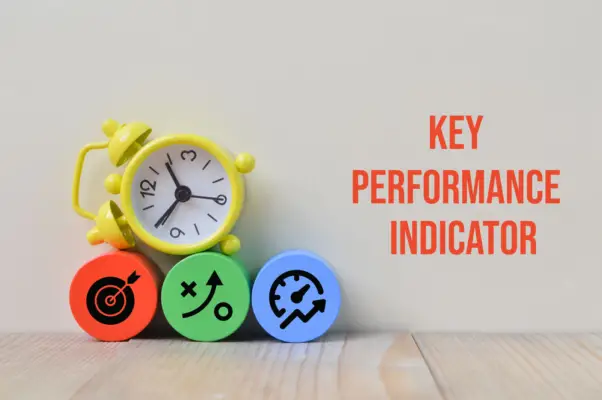The best stock indicators are tools traders and investors use to interpret market data and make trading decisions.
While there is no universally best indicator, as their effectiveness can vary based on market conditions and individual trading strategies, some indicators are widely recognized for their utility in generating accurate trading signals.
- Relative Strength Index (RSI): The RSI is a momentum oscillator that measures the speed and change of price movements. It can help identify overbought or oversold conditions in the market, which might signal a potential reversal or pullback in the price (Investopedia).
- Moving Average Convergence Divergence (MACD): This indicator is used to spot changes in the strength, direction, momentum, and duration of a trend in a stock’s price. It’s one of the most popular and broadly used indicators for forex traders (Axi).
- Bollinger Bands: Bollinger Bands are a volatility indicator that consists of a middle line and two price channels (bands) above and below it. The bands expand and contract based on the price volatility, helping to identify potential overbought or oversold conditions.
- Fibonacci Retracements: This tool is used to identify potential support and resistance levels based on the Fibonacci sequence. It’s considered one of the best leading indicators for day trading and can be quite effective in trending markets (The Secret Mindset).
- Pivot Points: Pivot points determine overall market trends over different time frames. They are calculated using the previous trading session’s high, low, and close and can be used to identify potential support and resistance levels.
Remember that no indicator is foolproof, and it’s often best to use a combination of indicators to confirm trading signals. Additionally, traders should consider the market context and their own risk tolerance when using technical indicators.
Stock indicators are tools traders use to analyze the market and make informed investment decisions. Technical analysis is a popular approach to trading that relies heavily on stock indicators.
Technical indicators are mathematical calculations based on historical price and volume data that traders use to identify trends, momentum, and potential buy and sell signals.
Understanding stock indicators is essential for any trader looking to improve their trading strategy.
Technical indicators can be divided into several categories: support and resistance, trend analysis, volume-based indicators, volatility indicators, momentum and oscillators, patterns, and chart analysis.

Each category has its own set of indicators that traders can use to gain insight into the market.
Traders can increase their chances of success by using the best stock indicators.
Technical analysis is not a foolproof method, but it can provide valuable insights into market trends and help traders identify potential opportunities.
In the following sections, we will explore some key technical indicators traders use to analyze the market and make informed investment decisions.
Key Takeaways
- Technical indicators are mathematical calculations that traders use to analyze the market and make informed investment decisions.
- Technical indicators can be divided into several categories: support and resistance, trend analysis, volume-based indicators, volatility indicators, momentum and oscillators, patterns, and chart analysis.
- By learning to use the best stock indicators, traders can make more informed decisions and increase their chances of success.
Understanding Stock Indicators
Stock indicators are tools traders use to analyze market trends and help identify potential entry and exit points.
There are two main types of analysis: technical and fundamental. Technical analysis is based on past market data, while fundamental analysis is based on studying a company’s financial statements and economic indicators.
Technical vs. Fundamental Analysis
Technical analysis is the most commonly used approach for short-term trading. It uses charts and technical indicators to analyze market trends and predict future price movements.
Technical indicators are mathematical calculations based on a security’s price and/or volume.
They generate buy and sell signals and can help traders identify potential entry and exit points.
On the other hand, fundamental analysis is used to evaluate the intrinsic value of a company’s stock.
It involves the study of a company’s financial statements, economic indicators, and industry trends.
Fundamental analysis is typically used for long-term investing and is less useful for short-term trading.
The Role of Price and Volume
Price and volume are two of the most important factors in technical analysis. Price is the most basic indicator of market activity and reflects the supply and demand for a security.
On the other hand, volume measures the number of shares traded in a given period. High volume is often associated with significant price movements and can be used to confirm the strength of a trend.
Technical indicators analyze price and volume data and help identify potential entry and exit points.
The most commonly used technical indicators include moving averages, relative strength index (RSI), and Bollinger Bands.
These indicators identify trends, momentum, and potential reversals in the market.
Stock indicators are valuable tools for traders and investors alike. Technical analysis is the most commonly used approach for short-term trading and involves using charts and technical indicators to analyze market trends.
On the other hand, fundamental analysis is used to evaluate the intrinsic value of a company’s stock and is typically used for long-term investing.

Price and volume are two of the most important factors in technical analysis and are used to identify potential entry and exit points.
Key Technical Indicators
Technical indicators are mathematical calculations based on a stock’s price and/or volume.
They can help traders and investors identify trends and potential entry and exit points. Here are three key technical indicators:
Moving Averages
Moving averages are trend indicators that smooth out price action by calculating the average price of a stock over a certain period of time.
The most common moving averages are the simple moving average (SMA) and the exponential moving average (EMA).
The SMA gives equal weight to each price point in the period, while the EMA gives more weight to recent prices.
Moving averages can help traders and investors identify the direction of a trend. When the price is above the moving average, it’s generally considered a bullish signal; when it’s below, it’s generally considered a bearish signal.
Traders can also use moving averages to identify potential support and resistance levels.
Relative Strength Index (RSI)
The RSI is a momentum indicator that measures the strength of a stock’s price action. It’s calculated by comparing the average gains and losses of a stock over a certain period of time.
The RSI ranges from 0 to 100, with readings above 70 indicating an overbought condition and below 30 indicating an oversold condition.
The RSI can help traders and investors identify potential reversals in a stock’s price action. When the RSI is in overbought territory, it suggests that the stock may be due for a pullback, while when it’s in oversold territory, it suggests that the stock may be due for a bounce.
MACD
The MACD (Moving Average Convergence Divergence) is a trend-following momentum indicator that measures the relationship between two moving averages of a stock’s price.
It’s calculated by subtracting the 26-day EMA from the 12-day EMA and plotting a 9-day EMA of the MACD line.
The MACD can help traders and investors identify potential changes in a stock’s trend. When the MACD line crosses above the signal line, it’s generally considered a bullish signal, and when it crosses below, it’s generally considered a bearish signal.
Traders can also use the MACD to identify potential divergences between the MACD line and the stock’s price action, which may suggest a potential reversal.
Support and Resistance
Support and resistance levels are two of the most commonly used concepts in technical analysis.
They are used to identify potential price points where the market may experience a pause or reversal of the prevailing trend.
Identifying Levels
Support levels are price points where a stock has historically found buying pressure. This means the stock price is more likely to “bounce” off this level and start moving higher.
On the other hand, resistance levels are price points where a stock has historically found selling pressure. This means the stock price is more likely to “bounce” off this level and start moving lower.
Traders use various tools and indicators to identify support and resistance levels. The most commonly used tools include trendlines, moving averages, and pivot points.
These tools can help traders identify key levels of support and resistance, which can then be used to make trading decisions.
Breakouts and Reversals
Breakouts and reversals are two of the most important concepts related to support and resistance levels.
A breakout occurs when a stock price moves above a resistance level or below a support level. This is often seen as a bullish or bearish sign, respectively, and can indicate the start of a new trend.
Conversely, a reversal occurs when a stock price moves back in the opposite direction after hitting a support or resistance level.
This can signify that the prevailing trend is losing momentum and may start a new trend.
Traders can use a variety of indicators to help identify potential breakouts and reversals.
The most commonly used indicators include the Relative Strength Index (RSI), Moving Average Convergence Divergence (MACD), and Bollinger Bands.
These indicators can help traders identify potential turning points in the market and make informed trading decisions.
Support and resistance levels are important concepts in technical analysis that can help traders identify potential price points where the market may experience a pause or reversal of the prevailing trend.
Traders use various tools and indicators to identify these levels and can use breakouts and reversals to make informed trading decisions.
Trend Analysis
Trend analysis is an essential aspect of technical analysis, and it involves identifying the direction of a stock’s price movement.
Traders use various trend indicators to determine the direction of the trend, and some of the most commonly used indicators include moving averages, relative strength index (RSI), and Bollinger bands.
Identifying a Trend
To identify a trend, traders use trendlines, which are straight lines that connect two or more price points on a chart.
A trendline that connects two or more higher lows indicates an uptrend, while a trendline that connects two or more lower highs indicates a downtrend.
Traders can also use moving averages to identify a trend. A moving average is a line that tracks the average price of a stock over a specific period.
When the stock price is above the moving average, it indicates an uptrend, while a stock price below the moving average indicates a downtrend.
Trendlines and Channels
Trendlines can also create channels, two parallel trendlines forming a trading range for the stock.
The upper trendline connects two or more higher highs, while the lower trendline connects two or more higher lows.
When the stock price is trading within the channel, it indicates a ranging market. Traders can use this information to buy at the lower trendline and sell at the upper trendline.
However, if the stock price breaks out of the channel, it indicates a trend reversal, and traders should exit their positions.
Trend analysis is an essential aspect of technical analysis, and traders use various trend indicators to identify the direction of the trend.
By using trendlines and channels, traders can also identify trading ranges and potential trend reversals, which can help them make profitable trades.
Volume-Based Indicators
Volume-based indicators are technical analysis tools that use trading volume to predict the future price movements of a stock.
These indicators are based on the idea that changes in trading volume can provide valuable insights into market trends and price momentum.
On-Balance Volume (OBV)
On-balance volume (OBV) is a volume-based indicator that measures the cumulative buying and selling pressure of a stock by adding or subtracting the trading volume of each day based on the direction of the price movement.
OBV is used to confirm price trends and predict potential trend reversals.
OBV is calculated by adding a day’s trading volume to the previous day’s OBV if the closing price is higher than the previous day’s.
If the closing price is lower than the previous day’s, the trading volume is subtracted from the previous day’s OBV. If the closing price equals the previous day’s closing price, the OBV remains the same.
Volume Oscillators
Volume Oscillators are technical indicators that use the difference between two moving averages of trading volume to predict future price movements.
The most common volume oscillator is the Moving Average Convergence Divergence (MACD) indicator.
The MACD indicator is calculated by subtracting the 26-day exponential moving average of trading volume from the 12-day exponential moving average of trading volume.
The resulting value is plotted as a histogram, with positive values indicating bullish sentiment and negative values indicating bearish sentiment.
Another popular volume oscillator is the Chaikin Oscillator, which uses the difference between the 3-day exponential moving average and the 10-day exponential moving average of trading volume to predict future price movements.
In general, volume-based indicators can be useful tools for predicting future price movements and confirming price trends.
However, traders should know that volume-based indicators are not foolproof and should be used with other technical analysis tools for best results.

Volatility Indicators
Volatility indicators are technical analysis tools that help traders to identify the degree of price movement in the market.
These indicators assist traders in measuring the level of uncertainty or risk in the market, which is useful in making trading decisions.
Two of the most commonly used volatility indicators are Bollinger Bands and Average True Range (ATR).
Bollinger Bands
Bollinger Bands are a popular volatility indicator that uses a moving average and two standard deviations to create a range around the price of an asset.
The upper and lower bands represent the asset’s price range likely to trade within a given period. When the asset’s price moves outside the bands, it is considered overbought or oversold, indicating a potential reversal in the price trend.
Bollinger Bands are useful in identifying volatility in the market and are commonly used by traders to generate buy and sell signals.
Average True Range (ATR)
Average True Range (ATR) is another popular volatility indicator that measures the degree of price movement in an asset.
It calculates the average range of price movement over a given period, considering gaps in the price movement.
ATR is useful in identifying the volatility of an asset and can be used to set stop-loss levels and profit targets. A high ATR indicates high volatility, while a low ATR indicates low volatility.
Volatility indicators are essential tools for traders to measure and analyze the degree of price movement in the market.
Bollinger Bands and Average True Range (ATR) are two of the most commonly used volatility indicators and are useful in identifying the level of uncertainty or risk in the market.
These indicators enable traders to make informed trading decisions and manage risk effectively.
Momentum and Oscillators
Traders widely use momentum and oscillator indicators to identify the direction of a trend and the strength of that trend.
These indicators are used to determine whether a stock is overbought or oversold. This section will discuss two popular momentum and oscillator indicators: Stochastic Oscillator and ADX and Aroon.
Stochastic Oscillator
The Stochastic Oscillator is a momentum indicator that compares a stock’s closing price to its price range over a given period of time.
This indicator is used to identify overbought and oversold conditions in a stock. The Stochastic Oscillator is plotted on a scale of 0 to 100, with readings above 80 indicating overbought conditions and below 20 indicating oversold conditions.
Traders use the Stochastic Oscillator to identify potential buy and sell signals. For example, when the Stochastic Oscillator crosses above the 20 level, it is considered a buy signal.
Conversely, it is considered a sell signal when the Stochastic Oscillator crosses below the 80 level.
ADX and Aroon
The ADX (Average Directional Index) and Aroon indicators are used to identify the strength and direction of a trend.
The ADX indicator measures the strength of a trend, while the Aroon indicator identifies the direction of a trend. These indicators are often used together to confirm the strength and direction of a trend.
The ADX indicator is plotted on a scale of 0 to 100, with readings above 25 indicating a strong trend.
The Aroon indicator is plotted on a scale of 0 to 100, with readings above 50 indicating an uptrend and below 50 indicating a downtrend.
Traders use the ADX and Aroon indicators to identify potential buy and sell signals. For example, when the ADX is above 25, and the Aroon Up crosses above the Aroon Down, it is considered a buy signal.
Conversely, it is considered a sell signal when the ADX is below 25 and the Aroon Down crosses above the Aroon Up.
Momentum and Oscillator indicators are essential tools for traders to identify the direction and strength of a trend.
The Stochastic Oscillator and ADX and Aroon indicators are just two examples of the many momentum and oscillator indicators available to traders.
Patterns and Chart Analysis
Technical analysts use patterns and chart analysis to identify trends in the market and make informed decisions about buying and selling stocks.
These tools are based on the idea that price movements are not random but follow specific patterns that can be predicted and used to make profitable trades.
Candlestick Patterns
One of the most popular charting tools used in technical analysis is candlestick charts. Candlestick charts provide a visual representation of price movements and are used to identify patterns that can indicate a change in trend.
Candlestick patterns are formed by a stock’s price action over time and are used to predict future price movements.
For example, the hammer pattern is a bullish candlestick pattern that indicates a potential reversal in a downtrend.
The pattern is formed when the stock opens near its low and closes near its high, with a long lower shadow. This indicates that buyers have entered the market and are increasing prices.
Chart Patterns
Chart patterns are another important tool in technical analysis. Chart patterns are formed by a stock’s price action over time and are used to identify trends and potential reversals.
Several chart patterns include head and shoulders, double top, and ascending triangle.
The head and shoulders pattern is a bearish reversal pattern that indicates a potential change in trend.
The pattern is formed by three peaks, with the middle peak being the highest. The two outside peaks are called the shoulders, and the middle peak is called the head.
When the price breaks below the pattern’s neckline, it signals that the trend is reversing.
In conclusion, patterns and chart analysis are important tools technical analysts use to identify trends and potential reversals in the market.
Candlestick and chart patterns are two of the most popular charting tools used in technical analysis.
Understanding these tools, traders can make informed decisions about buying and selling stocks.

Trading Signals
Trading signals are technical indicators that help traders decide when to buy or sell a stock.
These signals are based on various mathematical calculations and patterns and can be used with other indicators to confirm trends.
Buy and Sell Signals
Buy and sell signals are the most common type of trading signals. They are generated when an indicator crosses a certain threshold, indicating a change in trend.
For example, a buy signal may be generated when a stock’s price crosses its 50-day moving average, while a sell signal may be generated when the price crosses below the same moving average.
Traders often use multiple indicators to generate buy and sell signals, which can help confirm the trend and reduce false signals.
Some popular indicators for generating buy and sell signals include the Moving Average Convergence Divergence (MACD), Relative Strength Index (RSI), and Stochastic Oscillator.
Divergence Signals
Divergence signals are another type of trading signal that can be used to identify potential trend reversals.
Divergences occur when the price of a stock moves in the opposite direction of an indicator, such as the MACD or RSI. This can indicate that the current trend is weakening and that a reversal may be imminent.
Traders can use divergences to help confirm buy and sell signals from other indicators.
For example, if a stock’s price is trending higher while the MACD is trending lower, this may indicate that the uptrend is losing momentum and that a sell signal may be forthcoming.
In conclusion, trading signals can be useful for traders making informed decisions on when to buy or sell a stock.
Using multiple indicators and confirming signals with other technical analysis tools, traders can reduce false signals and increase their chances of success.
Risk Management
When trading stocks, managing risk is crucial to success. Risk management involves identifying and mitigating potential losses by setting stop losses and managing risk-reward ratios.
Setting Stop Losses
Setting stop losses is one of the most common risk management techniques traders use.
A stop loss is an order to exit a trade at a predetermined price level to limit potential losses.
Setting a stop loss, traders can protect themselves from significant losses in the event of a pullback or sudden price drop.
Traders should set their stop loss orders at a level that allows normal market fluctuations while limiting potential losses.
It’s important to note that stopping losses does not guarantee protection against losses, but it can help minimize them.
Risk-Reward Ratio
Another important aspect of risk management is managing the risk-reward ratio. This ratio compares the potential profit from a trade to the potential loss.
A good rule of thumb is to aim for a risk-reward ratio of at least 1:2, meaning that the potential profit is at least twice the potential loss.
Traders can use this ratio to determine their entry and exit points. For example, if a trader enters a trade with a stop loss of $10 and a profit target of $20, their risk-reward ratio would be 1:2.
If the trade reaches the profit target, the trader would make a profit of $20, twice the potential loss of $10.
Managing risk is an important aspect of successful stock trading. By setting stop losses and managing risk-reward ratios, traders can protect themselves from significant losses and increase their chances of success.

Conclusion
When selecting the best stock indicators, it is important to remember that no single indicator can guarantee success in the stock market.
Successful investors use a combination of technical and fundamental analysis to make informed investment decisions.
For a longer-term investor, it may be beneficial to focus on indicators such as moving averages, which can help identify trends over a longer period of time.
On the other hand, for a shorter-term investor, indicators such as the Relative Strength Index (RSI) or Stochastic Oscillator may be more useful in identifying overbought or oversold conditions in the market.
Investment opportunities can arise when stock indicators are used with other market analysis tools.
For example, combining moving averages with fundamental analysis can help identify undervalued stocks with strong potential for growth.
The bottom line is that investors should not rely solely on stock indicators but should use them as part of a larger investment strategy.
Combining technical and fundamental analysis and carefully considering investment opportunities, investors can make informed decisions and increase their chances of success in the stock market.

Chris Ekai is a Risk Management expert with over 10 years of experience in the field. He has a Master’s(MSc) degree in Risk Management from University of Portsmouth and is a CPA and Finance professional. He currently works as a Content Manager at Risk Publishing, writing about Enterprise Risk Management, Business Continuity Management and Project Management.

